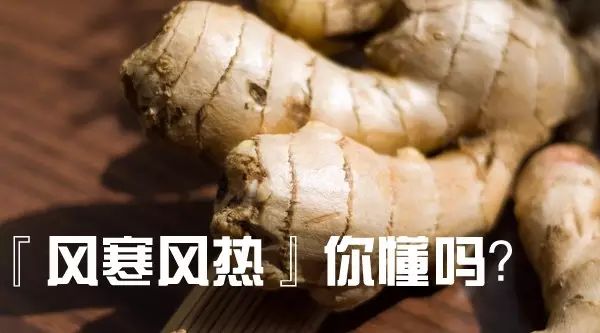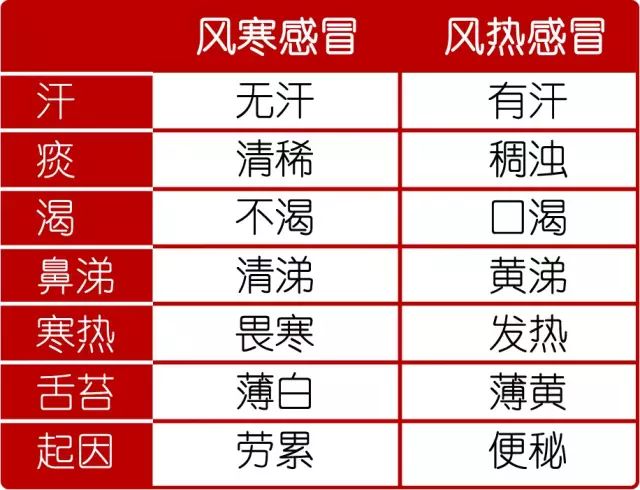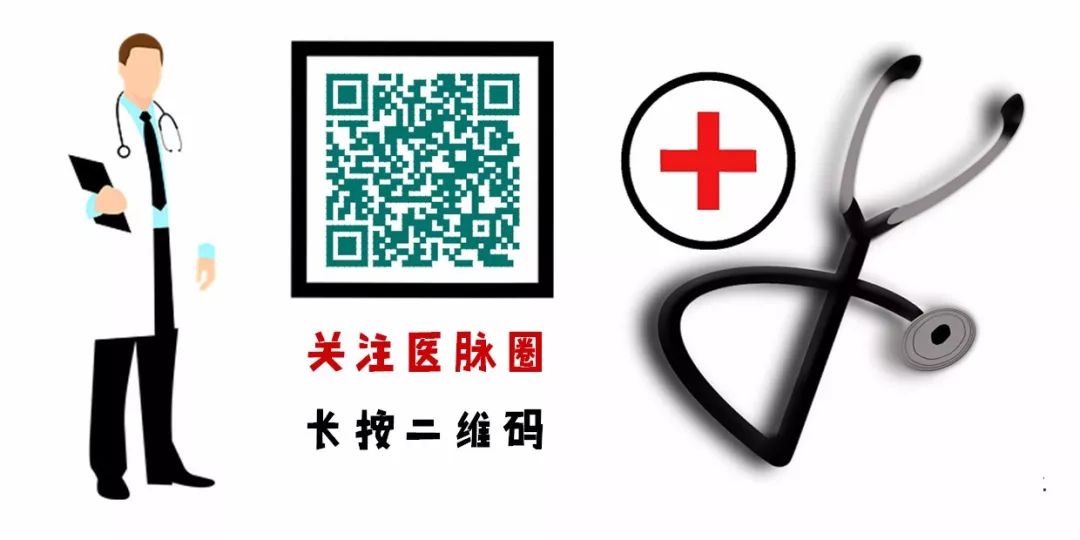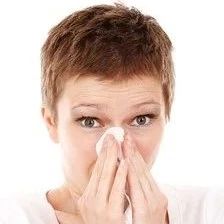


In spring, the temperature fluctuates greatly, leading to frequent colds. However, although they are both classified as colds, there are distinctions between Wind-Cold (Feng Han) and Wind-Heat (Feng Re) colds, with different causes and treatments, especially regarding dietary therapy.
1Differences Between Wind-Cold and Wind-Heat Colds
Wind-Cold (Feng Han) Cold typically occurs in cold seasons, such as winter, late autumn, and early spring, caused by the invasion of cold pathogens.
The symptoms of Wind-Cold include mild fever, severe chills, absence of sweating, headache, body aches, clear nasal discharge, cough, no redness or swelling in the throat, pale red tongue, and floating tight pulse.
Wind-Heat (Feng Re) Cold usually occurs in warmer seasons, such as spring, early summer, and early autumn, caused by the invasion of wind-heat pathogens.
The symptoms of Wind-Heat include high fever, mild chills, sweating or little sweating, headache, nasal congestion, sore throat, red tongue, and rapid pulse.
 Visual Comparison2Dietary Restrictions
Visual Comparison2Dietary Restrictions
Regardless of Wind-Cold or Wind-Heat Cold
Avoid all nourishing, greasy, sour, and astringent foods.
Such as pork, duck, chicken, lamb, glutinous rice, Astragalus (Huang Qi), Polygonatum (Huang Jing), Ophiopogon (Mai Dong), Ginseng (Ren Shen), donkey-hide gelatin (A Jiao), various sea fish, shrimp, crabs, longan meat, pomegranate, black plum, and various sticky sweet desserts.
Dietary Restrictions for Wind-Cold Cold Patients
Avoid cold-natured foods.
Such as persimmons, dried persimmons, tofu, mung bean sprouts, field snails, snails, clam meat, razor clam meat, raw radish, raw lotus root, raw sweet potato, raw cucumber, raw pear, raw water chestnut, Luo Han Guo, cold tea, chrysanthemum brain, mint, honeysuckle, white chrysanthemum, and fat sea.
Dietary Restrictions for Wind-Heat Cold Patients
Avoid foods that generate heat.
Such as ginger, pepper, cinnamon, fennel, clove, sand ginger, white liquor, and Cordyceps (Dong Chong Xia Cao).
Myth-busting: This indicates that ginger and brown sugar water is not suitable for all colds.3TCM Treatments
Wind-Cold Cold
Simply find ways to induce sweating, such as drinking hot water, hot porridge, or ginger soup, then cover with a thick blanket.
Wind-Heat Cold
Should drink more water, speak less, maintain smooth bowel movements, and may take Ban Lan Gen (Isatis Root) granules or other heat-clearing and detoxifying medicines to relieve symptoms.
4Tips for Preventing Spring Colds1.Pay Attention to Diet
Radishes and ginger are the best health foods in early spring. Regularly consume foods that disperse exterior pathogens, clear heat and detoxify, induce sweating, and promote diuresis, such as ginger, scallions, radishes, honeysuckle tea, and blood-nourishing and energy-boosting foods like red dates, lotus root, and lily.
2. Soak Feet in Hot Water
Soak feet in warm water for 15 minutes before bed, ensuring the water level covers the feet.
3. Gargle with Salt Water
Gargle with diluted salt water every morning and evening, and after meals, to eliminate oral bacteria.
4. Drink Ginger Sugar Water
Boil brown sugar with water and add ginger, drink while hot to prevent colds.
5. Physical Exercise
Engage in regular physical exercise, such as walking, running, hiking, playing ball, or practicing martial arts, to enhance the body’s ability to resist cold and prevent colds.


